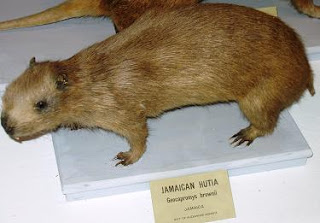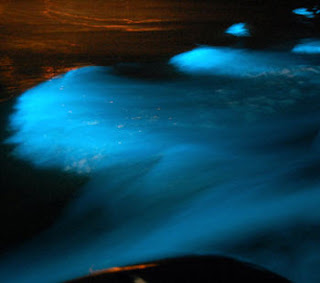About Jamaica:
 |
| Jamaica Vacations | Jamaica Resorts |
Once a Spanish possession known as Santiago, it became an English colony in 1655 under the name "Jamaica". It achieved full independence from Britain on August 6, 1962. With 2.8 million people, it is the third most populous anglophone country in the Americas, after the United States and Canada. It remains a Commonwealth realm in concert with the Monarchy of Jamaica holding ultimate executive power, where Queen Elizabeth II is the current head of state and Queen of Jamaica. Kingston is the country's largest city and the capital.
Jamaica has much to offer visitors including a unique Jamaica history, stunning landscapes that includes the Blue Mountains where the world's best coffees are grown, reefs for diving, hiking tours, fishing villages, waterfalls, wetlands, and some of the Caribbean's most beautiful sunsets.
 |
| Jamaica Vacations | Jamaica Resorts | Jamaica Weather |
Jamaica Facts:
Jamaica Map references:
Central America and the CaribbeanWhere is Jamaica:
Caribbean, island in the Caribbean Sea, south of CubaJamaica Geographic coordinates:
Jamaica:18 15 N, 77 30 W
Kingston Jamaica: (capital city)
17° 59' N, 76° 47' W
Ocho Rios Jamaica:
18° 23' N, 77° 6' W
Port Antonio Jamaica:
18° 10' N, 76° 27' W
Rocky Point Jamaica:
17° 43' 60 N, 77° 15' 0 W
Geography - note:
Strategic location between Cayman Trench and Jamaica Channel, the main sea lanes for the Panama CanalJamaica Climate:
The climate in Jamaica is tropical, with hot and humid weather, although higher inland regions are more temperate. Some regions on the south coast are relatively dry rain-shadow areas. Jamaica lies in the hurricane belt of the Atlantic Ocean; as a result, the island sometimes experiences significant storm damage.Capital of Jamaica:
KingstonHighest Point:
Blue Mountain (2,256 meters)Lowest Point:
Caribbean Sea (0 meters)Jamaica Terrain:
Mostly mountains, with narrow, discontinuous coastal plainDemonym:
JamaicanEthnic groups in Jamainca:
black 91.2%, mixed 6.2%, other or unknown 2.6% (2001 census)Jamaica language(s)
English (official), Jamaican CreoleJamaica Currency:
Jamaican dollar (JMD)National symbols of Jamaica:
National Bird — Red-billed Streamertail (aka Doctor Bird) (a Hummingbird, Trochilus polytmus)
National Flower – Lignum vitae (Guiacum officinale)
National Tree — Blue Mahoe (Hibiscus talipariti elatum)
National Fruit — Ackee (Blighia sapida)
National Motto — "Out of Many, One People."
Best time to Visit Jamaica:
Jamaica experiences two rainy seasons: May and June, then September and October.
Year-round, Jamaica's days are filled with warmth and sunshine, even during the rainy season. The average annual temperatures are between 80° and 86° F (26° – 30° C). The warmest months are July and August, and the coolest are January and February.
There is a popular Jamaican poem that describes the weather:
We have neither Summer nor Winter; Neither Autumn nor Spring; We have instead the days when the gold sun shines on lush green canefields – magnificently.
The best time to travel to Jamaica is: Anytime!
Jamaica Weather:
Get in Jamaica:
Citizens of the USA, including those visiting by cruise ship, require a passport. No visa is required.
Canadian citizens require:
- a passport or
- a birth certificate and ID card.
Passports can have expired and still be considered valid to enter Jamaica. However, they cannot have been expired for more than year to still use them to travel to the island. No visa is required for a stay of up to six months.
Citizens of countries in the Commonwealth of Nations require a passport valid for at least 6 months, a return ticket, and sufficient funds. No visa is required except for citizens of Sri Lanka, Nigeria, Pakistan, and Sierra Leone.
Japanese citizens can stay for 30 days without a visa.
German citizens can stay for 90 days without a visa. Similar terms probably apply to other countries in the Schengen union.
Most other nationalities need visas.
Transport in Jamaica:
The transport infrastructure in Jamaica consists of roadways, railways and air transport, with roadways forming the backbone of the island's internal transport system.
Flights To Jamaica:
 |
| Flights To Jamaica |
Donald Sangster International Airport (IATA: MBJ), (ICAO: MKJS) in Montego Bay.
Both airports receive vast numbers of international flights daily. There are smaller airports in Negril and Ocho Rios as well as another smaller one in Kingston, which can be accessed by smaller, private aircraft.
There are three international airports in Jamaica with modern terminals, long runways, and the navigational equipment required to accommodate the large jet aircraft used in modern and air travel: Norman Manley International Airport in Kingston, Ian Fleming International Airport in Boscobel, Saint Mary Parish, and the island's largest and busiest airport, Sir Donald Sangster International Airport in the resort city of Montego Bay. Norman Manley and Sangster International airports are home to the country's national airline, Air Jamaica. In addition there are local commuter airports at Tinson Pen (Kingston), Port Antonio, and Negril which cater to internal flights only. Many other small, rural centres are served by private fields on sugar estates or bauxite mines.
Roads in Jamaica:
The Jamaican road network consists of almost 13 049 miles (21,000 kilometres) of roads, of which over 9 321 miles (15,000 kilometres) is paved. The Jamaican Government has, since the late 1990s and in cooperation with private investors, embarked on a campaign of infrastructural improvement projects, one of which includes the creation of a system of freeways, the first such access-controlled roadways of their kind on the island, connecting the main population centres of the island. This project has so far seen the completion of 21 miles (33 kilometres) of freeway.
Railways of Jamaica:
Railways in Jamaica no longer enjoy the prominent position they once did, having been largely replaced by roadways as the primary means of transport. Of the 169 miles (272 kilometres) of railway found in Jamaica, only 35 miles (57 kilometres) remain in operation, currently used to transport bauxite.
On April 13, 2011, limited passenger service was resumed between May Pen, Spanish Town and Linstead.
Ports, shipping and lighthouses in Jamaica:
Owing to its location in the Caribbean Sea in the shipping lane to the Panama Canal and relative proximity to large markets in North America and emerging markets in Latin America, Jamaica receives high container traffic. The container terminal at the Port of Kingston has undergone large expansion in capacity in recent years to handle growth both already realized as well as that which is projected in coming years. Montego Freeport in Montego Bay also handles a variety of cargo like (though more limited than) the Port of Kingston, mainly agricultural products.
There are several other ports positioned around the island, including Port Esquivel in St. Catherine (WINDALCO), Rocky Point in Clarendon, Port Kaiser in St. Elizabeth, Port Rhoades in Discovery Bay, Reynolds Pier in Ocho Rios, and Boundbrook Port in Port Antonio.
To aid the navigation of shipping, Jamaica operates nine lighthouses.
Google Jamaica:
View Larger Map
Geography of Jamaica:
 |
Doctor's Cave Beach Club is a popular destination in Montego Bay |
 |
| Dunn's River Falls in Ocho Ríos. |
Jamaica Vacations:
Jamaica Tourism:
Kingston:
 |
| Kingston |
Hope Botanical Gardens:
The Royal Botanical Gardens, commonly called “Hope Gardens”, occupies 200 acres of land in the Ligunaea Plains of urban St Andrew. Today the gardens are the largest public green space in the Kingston metropolitan region, and are home to Jamaica’s most popular collection of endemic and exotic botanical collections.
Devon House Heritage Site:
 |
| Devon House Heritage Site |
Bog Walk:
The Rio Cobre runs through this valley, cutting a limestone gorge that is home to one of the most beautiful tropical watershed forests in the island.
Half Way Tree:
“Uptown” meets “downtown” in the constantly entertaining and lively road junction that is Half-Way-Tree. The capital of the parish of St Andrew, Half-Way-Tree is the unofficial marker of the divide between the urban, inner-city commercial areas of downtown Kingston, and the quieter, residential suburban communities of St. Andrew.
Bob Marley Museum:
 |
| Bob Marley Museum |
Hellshire:
Hellshire is one of the oldest continuously settled areas in Jamaica, yet, it has traditionally been one of the most sparsely populated places on the island.
Bull Bay:
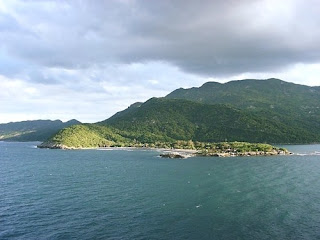 |
| Bull Bay |
Castleton:
Some twenty kilometres north of Kingston lies the small village of Castleton, known for its most famous attribute, the Castleton Botanical Gardens.
Kingston Heritage Sites:
Kingston has 32 heritage sites declared by Jamaica's National Heritage Trust:
- Scot's Kirk Church
- Coke Methodist Church
- East Queen Street Baptist Church
- Holy Trinity Cathedral
- Kingston Parish Church
- St. Peter's Church
- Wesley Methodist Church
- Fort Charles
- Port Royal Forts
- Port Royal
- Rockfort Spa
- Admiralty Houses
- Gordon House
- Hibbert House /Headquarters House
- Institute of Jamaica
- Liberty Hall
- Ward Theatre
- National Heroes Park
- St. William Grant Park
- Port Royal Terrestrial Archaeology
- Port Royal Underwater Archaeology
- Tower Street - General Penitentiary
- Kingston Railway Station
- Monument to the Rt. Excellent Sir Alexander Bustamante
- Monument to the Most Honourable Michael Manley
- Monument to the Most Honourable Sir Donald Sangster
- Monument to the Rt. Excellent George William Gordon & the Rt. Excellent Paul Bogle
- Monument to the Rt. Excellent Marcus Garvey
- Monument to the Rt. Excellent Nanny
- Monument to the Rt. Excellent Norman Manley
- Monument to the Rt. Excellent Samuel Sharpe
- Negro Aroused
Montego Bay:
 |
| Montego Bay |
It is a tourist destination with duty free shopping, cruise line terminal and the beaches. The city is backed by picturesque low mountains.
Greenwood Great House:
Greenwood Great House is over 200 years old. Formerly owned by the family of Elizabeth Barrett-Browning, the famous English poet, Greenwood is one of the best preserved great houses on the island.
Falmouth:
 |
| Falmouth |
Doctor's Cave Beach Club:
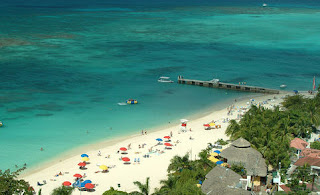 |
| Doctor's Cave Beach Club |
Duncans:
This small, clean town in rural Trelawny was named after its founder Patrick Duncans, and dates back to the late 1700s.
Bellefield Great House:
Bellefield Great House captures the essence of Jamaica’s plantation-rich history: expansive views, tropical gardens, and an unforgettable mansion replete with antique furnishings and classic family heirlooms.
Cockpit Country:
 |
| Cockpit Country |
Croydon on the Mountain:
This working plantation nestled in the foothills of the Catadupa mountains provides a breathtaking and panoramic view of the surrounding countryside.
Great river rafting and Plantation Tours:
This wonderful excursion takes you from into the Jamaican Countryside where you will experience the thrill of river rafting. The tour offers a breathtaking ride downstream under the direction of the captain who will make the trip as memorable as possible as he describes all the surrounding beauty through the valley and its awesome gorges.
Clark's Town:
 |
| Clarks Town |
Bob Marley Experience & Theatre:
Discover a legend and spirit of Bob Marley. This retail and entertainment centre includes complimentary admission to an air-conditioned theatre where visitors watch a film on the life and work of Bob Marley on the big screen.
Albert Town:
Albert Town is the largest town in southeastern Trelawny, an area dotted with small villages, rural communities and agricultural districts. Located on the outskirts of the Cockpit Country, much of the area’s beauty lies not in the small busy town centre, but just outside the town, in the cool hills and valleys covered with exotic tropical flora, intriguing interconnected limestone caves and numerous underground rivers and waterfalls.
Negril:
 |
| Negril Jamaica Vacations |
Negril is just about one hour and fifteen minutes drive from Sir Donald Sangster International Airport, in Montego Bay. Westmoreland is the westernmost parish in Jamaica, located on the south side of the island. Downtown Negril, the West End cliff resorts to the south of downtown, and the southern portion of the so-called "seven mile (11 km) beach" are in Westmoreland. The beach's length is the stuff of legends--it's actually little more than four miles in length, but tourists and travel writers insist on the "seven-mile" label. The northernmost resorts on the beach are in Hanover Parish. The nearest large town is Savanna-la-Mar, the capital of Westmoreland Parish.
Grange Hill:
Grange Hill, in the deep rural hills of Westmoreland, is a thriving community and the second largest commercial centre in the parish. The town is located in west central Westmoreland, in an area long used for horse breeding and rearing.
Animal Hill:
Animal Hill is not far from Fat Hog Quarter, in the interior of Hanover, a rural area whose citizens are primarily small-farmers and cattle rearers.
Bloody Bay:
 |
| Bloody Bay |
Country Western Horse Back Riding:
Ride this beautiful 700 acre property located outside Negril in Westmoreland, and experience the natural habitats of Jamaican wildlife such as birds, animals, sand crabs etc. set among the mangroves, ackee trees and a pimento plantation. Take in the magnificent beauty of the view from inland as you head to the Caribbean Sea.
Cousin's Cove:
Cousin’s Cove, a small inlet along the Hanover coastline, is unknown to most tourists, but is as important to Jamaican heritage as it is beautiful.
Ocho Rios:
 |
| Ocho Rios |
It was once a fishing village but now caters to tourists. It is a port of call for cruise ships as well as for cargo ships loading sugar, limestone, and in the past, bauxite. Scuba diving and other water sports are offered in the town's vicinity.
The name "Ocho Rios" is a misnomer because there are not eight rivers in the area. It is most likely a British corruption of the original Spanish name "Las Chorreras" ("the waterfalls"), a name given to the village because of the nearby Dunn's River Falls.
The north coast highway from the international airport at Montego Bay to Ocho Rios has been improved since 2000 and the journey is now an hour and forty five minutes drive. On 26 August, 2011, the Jamaican government announced a $21 million revitalization plan for the resort area.
The town has restaurants, night clubs in Margaritaville and Dolphin Cove, where tourists swim and interact with dolphins.
It is perhaps most notable for its use in Dr No, the very first James Bond film, which was released in 1962. It was the home of Miss Taro, played by Zena Marshall, who was an adversary of Bond (Sean Connery) and in alliance with the main villain Dr Julius No (Joseph Wiseman). It also appears as the primary location for the horror sequel Piranha II: The Spawning, many of the scenes being photographed at the Mallards Beach-Hyatt, now the Sunset Jamaica Grande.
Dunn's River Falls:
 |
| Dunn's River Falls |
About 600 feet (180 m) high, the waterfalls are terraced like giant stair steps of which some are man-made improvements. Several small lagoons are interspersed among the vertical sections of the falls.
Climbing up the waterfalls is a popular tourist activity and is often, but not exclusively, performed with the help of tour guides from the park. It takes around 1-1.5 hours to climb with short breaks for photographs and video recordings taken by the tour guides. The falls are bordered by lush, green vegetation that shades the area from the sun. This helps keep the area cool as people try to climb the waterfall. The falls can be hiked with relative ease, often in a hand-holding human chain led by a guide.
Firefly:
The historic home of playwright Noel Coward offers a nice tour. Named for the luminous insects seen in the warm evenings, this house has certainly entertained its share of luminaries from both the political and entertainment worlds, including Queen Elizabeth II, Laurence Olivier, Sophia Loren, Elizabeth Taylor, Alec Guiness, Peter O'Toole, and Richard Burton.
Green Grotto Caves:
 |
| Green Grotto Caves |
Coyaba River Garden and Museum:
This is a good stop for history and botanical buffs. The real splendor of the attraction, however, lies in its beautiful gardens. Stroll through the gardens, past natural springs and waterfalls.
Cave Valley:
Cave Valley, so called because of its proximity to the large system of interconnecting limestone caves that stretch through the north and west of the country, is located on the banks of the Cave River.
Island Village:
Island Village is Jamaica's newest attraction. Located - On the Beach - just minutes away from the Cruise Ship Pier in Ocho Rios, its picturesque open-air setting, boardwalk, natural-spring lagoons and beautiful flowering trees provide a refreshing experience. Visit The Reggae XPlosion - interactive Reggae exhibition, Internet Jungle, Jimmy Buffet's Margaritaville, Eight Rivers Gaming Centre, duty free shops and curio shops or simply relax on the beach.
Port Antonio:
 |
| Port Antonio |
Tourist destinations in Port Antonio:
One popular sight in this area is the Blue Lagoon, Jamaica, which owes its colour to its depth of 200 feet, other sights include the secluded Frenchman's Cove Beach, the ruins of Folly Mansion and the historic DeMontevin Lodge. The Rio Grande River, Boston Bay and Reach Falls are also close by.
Blue Lagoon:
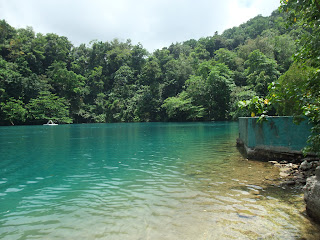 |
Blue Lagoon Beach, Port Antonio |
Buff Bay:
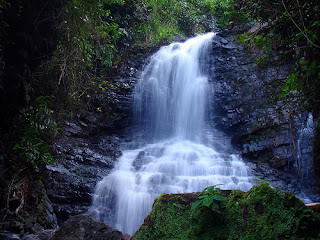 |
| Buff Bay Valley, Portland Jamaica |
Annotto Bay:
In northeast St. Mary, acres and acres of banana plantations seem to stretch forever, but just between the swaying banana leaves and the sea is the small, coastal highway town of Annotto Bay. In the town centre, a handful of early twentieth century Jamaican vernacular buildings house government social service offices such as the Post Office, the Tax Office and the Police Station.
South Coast:
Untrampled by the lockstep march of the resort-catered hordes, the southern coast serves up an irresistible slice of the unspoiled Jamaica. The area is awash with natural splendor – majestic rivers, lugubrious swamps, gorgeous waterfalls, looming mountains, ominous cliffs and sandy beaches. It’s one of the island’s great ironies that a region so unsullied by mass tourism is so packed with sights and activities.
Jamaica Beach:
 |
| Jamaica_Beach |
There are over 50 public beaches in Jamaica. Some make an entry charge (for use of facilities) and have security guards.
Many sea-front hotels are able to control access to what is effectively their private beach. They may, for a fee, allow non-residents to gain access and use their facilities.
Ocho Rios:
 |
| ocho rios beach jamaica |
Winnifred Beach:
Just a mile on from the closed beach where Tom Cruise once juggled his bottles in Cocktail, Winnifred Beach is one of the most appealing beaches in all of Jamaica. Located in the Fairy Hill community, Winnifred Beach is home to a delightful reef just offshore that’s not only perfect for snorkelling, but for its clear, calm, bright-blue water justly popular with locals.
James Bond Beach:
 |
| James Bond Beach, Oracabessa, Jamaica. |
Blue Lagoon:
Enjoy rum punch on the shaded veranda or watch the colours of the lagoon change with the movement of the sun. The Blue Lagoon is over 178ft deep and is Port Antonio's most famous attraction.
Island Village:
Island Village is Jamaica's newest attraction. Located - On the Beach - just minutes away from the Cruise Ship Pier in Ocho Rios, its picturesque open-air setting, boardwalk, natural-spring lagoons and beautiful flowering trees provide a refreshing experience. Visit The Reggae XPlosion - interactive Reggae exhibition, Internet Jungle, Jimmy Buffet's Margaritaville, Eight Rivers Gaming Centre, duty free shops and curio shops or simply relax on the beach.
Doctor's Cave Beach Club:
 |
| Doctor's Cave Beach Club, Montego Bay, Jamaica |
It is noted for its crystal-clear turquoise waters and near-white sand. Its sheltered location provides calm waters encouraging even the most diffident swimmers to practice safely.
The beach has a broad swath of very clean, near-white sand some 200 m long. It is fringed by trees, and has numerous facilities: bar, restaurant, well-appointed changing rooms and showers. For members there are several club rooms.
Alligator Pond:
 |
| Alligator Pond |
Unlike the tourist-oriented coasts in the northern part of the country, Alligator Pond's shoreline is as much about work as play; here fishermen launch their boats to catch some of the island's best-regarded fish while women conduct the wholesale business of the catch. Weather-worn cookshops and bars line the sand's edge, supplying food staples such as curried goat and Red Stripe beer.
Billy's Bay:
Billy's Bay is 2 miles east of Fort Charles Bay and is the second fishing beach and settlement reached when approaching Treasure Beach from Black River.
Bluefields Beach:
 |
| Bluefields Beach |
The old road from Black River to Savanna-la-Mar is separated from the beach by only a low stone wall. However, this old road was replaced by a slightly more inland bypass in the 1990s and one now approaches the beach through gates from a junction at the western end of this bypass. As a result there is now extensive car parking on the approach road and within a gated Beach Park. The whole area can become very full on holidays. A further set of gates provides pedestrian access to the old road by the beach.
Boston Beach:
Boston Beach is a coastal community on the north coast of the island of Jamaica, with a public beach which is one of the few beaches in Jamaica attracting surfers. It is located nine miles east of the town of Port Antonio.
Calabash Bay:
 |
| Calabash Bay |
Its 600m long beach has a narrow strip of black and yellow-red sand. The swimming is good but since the beach is open to the south, small breakers sometimes appear when strong seas are running. The presence of tourists attracts a few hawkers to the beach to sell their wares.
Font Hill Beach:
Font Hill Beach is located in St Elizabeth, on the south coast of Jamaica, between Black River and Whitehouse. It is within a nature reserve on the Font Hill property owned by the Petroleum Company of Jamaica. It is an attractive, well kept beach with clean golden sand and safe swimming in a roped off area. Beyond the rope there is a shallow reef.
Font Hill Beach is sometimes very popular at weekends and holidays, but is usually quiet during weekdays.
Frenchman's Bay:
Frenchman's Bay is the second beach and settlement reached when approaching Treasure Beach from Black River or Santa Cruz.
There are a number of small, bustling restaurants.
Great Pedro Bay:
Great Pedro Bay is the most easterly of the settlements and beaches that make up Treasure Beach. The road ends here, regardless of where you are coming from.
Gut River:
 |
| Gut River |
There is wading access along the river to the beach which is in the middle of Long Bay, Manchester, a mostly deserted 20 mile strip of black sand.
Hellshire Beach:
Hellshire Beach, Jamaica, is located near Portmore, and famed for its fried fish and safe swimming. It has near white sands with a very small trace of black sand. Exposed when there is a sea running to the south, the waters close to shore are often quite cloudy due to the stirred up sand.
It is a popular public beach conveniently located for the residents of Portmore and weekend visitors from Kingston.
Once called "Healthshire" due to its reputation as a health retreat its name has since evolved into "Hellshire" though both pronunciations are technically correct.
Long Bay Beach:
Long Bay Beach is an almost deserted 10 miles (16 km) crescent of black sand on the central south coast of Jamaica in Manchester Parish.
Ocean View Beach:
 |
| Ocean View Beach |
The beach features a very broad swath of golden sand, and a good sized buoyed swimming area, which can get a bit choppy if wind and wave conditions are unfavourable. Almond trees provide a considerable amount of shade.
There are clean showering/changing/toilet facilities and two small bars/snack shops. Loungers are available free of charge.
Located on the dual carriageway North Coast Highway, immediately to the east of Breezes Hotel, access to the beach is controlled by the Cardiff Hall Owners' Association.
Higglers' stalls are located beyond the eastern fringe of boundary of the beach, and unless one ventures too close there is little disturbance from hawkers. However, a few hawkers also seem to congregate at the western end, along the boundary with Breezes Resort.
Treasure Beach:
 |
| Treasure Beach |
The region is isolated from the main tourist areas and the minor roads connecting with the main highway at Black River or Santa Cruz tend to suffer damage in heavy rain, but are usually passable with care. There are a few small hotels and guest houses serving tourists seeking a very quiet seaside location.
Whitehouse Beach:
Whitehouse Beach adjoins an area of former salt marsh in Westmoreland, Jamaica. The area is being developed as a tourist resort. It is located about 4 kilometres (2.5 mi) west of the town of Whitehouse.
About 1 kilometre (0.62 mi) of the beach is maintained by the new Sandals Whitehouse resort to a very high standard. The wide white sands are raked clean every morning.
Winifred Beach:
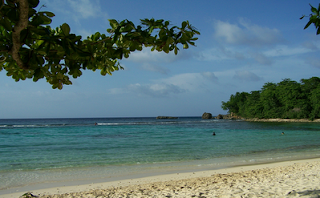 |
| Winifred Beach |
A campaign in progress to keep it public (free) in the face of moves to develop and enclose the surrounding area.
Thing to do in Jamaica:
Hiking, camping, snorkeling, horse back riding, backpacking, swimming, jet skiing, sleeping, scuba diving, kite surfing, visiting the Giddy house, drinking and swimming with dolphins.
Dunn’s River Falls is a must see and do if visiting Jamaica. It is located in Ocho Rios. The 600 feet cascading falls are gorgeous. You can actually climb right up the falls. It’s an amazing experience! Give it a try if you're up for a breathtaking challenge.
Hotel Marriage in Jamaica:
Over the past several decades, with the rapid growth of the tourism industry, "hotel marriages" have become a significant contributor to the total number of marriages occurring in the island. Hotel marriages are any marriage occurring in the island, performed by a certified marriage officer of the island.
The following is what you need to know or provide for your marriage in Jamaica:
1. Proof of citizenship - certified copy of Birth Certificate, which includes father’s name.
2. Parental consent (written) if under 18 years of age.
3. Proof of divorce (if applicable) - original Certificate of Divorce.
4. Certified copy of Death Certificate for widow or widower.
5. French Canadians need a notarized translated English copy of all documents and a photocopy of the original French documents.
6. Italian nationals celebrating their marriage in Jamaica must notify their embassy for legalization and translation.
Flora and fauna of Jamaica:
Jamaica's climate is tropical, supporting diverse ecosystems with a wealth of plants and animals.
Jamaica's plant life has changed considerably over the centuries. When the Spanish arrived in 1494, except for small agricultural clearings, the country was deeply forested. The European settlers cut down the great timber trees for building purposes and cleared the plains, savannas, and mountain slopes for cultivation. Many new plants were introduced including sugarcane, bananas, and citrus trees.
Areas of heavy rainfall contain stands of bamboo, ferns, ebony, mahogany, and rosewood. Cactus and similar dry-area plants are found along the south and southwest coastal area. Parts of the west and southwest consist of large grasslands, with scattered stands of trees.
The Jamaican animal life, typical of the Caribbean, includes highly diversified wildlife with many endemic species found nowhere else on earth. As with other oceanic islands, land mammals are made up almost entirely of Bats. The only non-bat native mammal extant in Jamaica is the Jamaican Hutia, locally known as the coney. Introduced mammals such as Wild Boar and the Small Asian Mongoose are also common. Jamaica is also home to many reptiles, the largest of which is the American Crocodile, however it is only present within the Black River and a few other areas. Lizards such as Anoles, Iguanas and snakes such as racers and the Jamaican Boa (the largest snake on the island) are common. None of Jamaica's native snakes are dangerously venomous to humans. One species of freshwater turtle is native to Jamaica, the Jamaican Slider. It is found only on Jamaica, Cat Island, and a few other islands in The Bahamas. In addition, many types of frogs are common on the island, especially Treefrogs. Birds are abundant, and make up the bulk of the endemic and native vertebrate species. Beautiful and exotic birds such as the Jamaican Tody and the Doctor Bird (the national bird) can be found among a large number of others. Insects and other invertebrates are abundant, including the world's largest centipede, the Amazonian Giant Centipede, and the Homerus Swallowtail, the Western Hemisphere's largest butterfly.
Jamaican waters contain considerable resources of fresh-and saltwater fish. The chief varieties of saltwater fish are Kingfish, Jack, Mackerel, Whiting, Bonito, and Tuna. Fish that occasionally enter freshwater and estuarine environments include Snook, Jewfish, Mangrove snapper, and Mullets. Fish that spend the majority of their lives in Jamaica's fresh waters include many species of Livebearers, Killifish, freshwater Gobies, the Mountain Mullet, and the American Eel. Tilapia have been introduced from Africa for aquaculture, and are very common.
Among the variety of terrestrial, aquatic and marine ecosystems are dry and wet limestone forests, rainforest, riparian woodland, wetlands, caves, rivers, seagrass beds and coral reefs.
The authorities had recognized the tremendous significance and potential of this aspect of their heritage and designated some of the more 'fertile' areas 'protected'. Among the island's protected areas are the Cockpit Country, Hellshire Hills, and Litchfield forest reserves. In 1992, Jamaica's first marine park, covering nearly 6 square miles (about 15 km2), was established in Montego Bay.
The following year Blue and John Crow Mountains National Park was created on roughly 300 square miles (780 km2) of wilderness that supports thousands of tree and fern species and rare animals.
Jamaica Map:
Hotels in Jamaica:
- Doctors Cave Beach Hotel
- Round Hill Hotel and Villas
- CocoLaPalm Seaside Resort
- Country Country Beach Cottages
- Negril Beach Villa
- Negril Tree House Resort
- Rooms on the Beach Negril
- White Sands Negril
- Rooms Ocho Rios
- SandCastles Resort
- Jake's
Jamaica Resorts:
Montego Bay Jamaica Resorts
- Coyaba Beach Resort & Club
- Grand Palladium Jamaica Resort & Spa
- Grand Palladium Lady Hamilton Resort & Spa
- Half Moon, A RockResort
- Hilton Rose Hall Resort & Spa
- Holiday Inn Sunspree Resort Montego Bay, Jamaica
- Hotel Riu Montego Bay, Jamaica
- Iberostar Grand Hotel Rose Hall
- Iberostar Rose Hall Beach
- Iberostar Rose Hall Suites
- Royal Decameron Montego Beach
- Sandals Carlyle Inn
- Sandals Montego Bay, Jamaica
- Sandals Royal Caribbean Resort & Private Island
- Secrets St. James Montego Bay, Jamaica
- Secrets Wild Orchid Montego Bay, Jamaica
- Sunset Beach Resort, Spa, and Waterpark
- The Ritz-Carlton Golf & Spa Resort Rose Hall
Negril Jamaica Resorts
- Beaches Negril, JamaicaResort & Spa
- Beaches Sandy Bay
- Breezes Grand Resort & Spa - Negril, Jamaica
- ClubHotel Riu Negril, Jamaica
- Couples Negril, Jamaica
- Couples Swept Away Negril, Jamaica
- Grand Pineapple Beach Negril, Jamaica
- Hedonism II - Negril, Jamaica
- Hotel Riu Palace Tropical Bay
- Legends Beach Resort
- Merril's Beach Resort
- Samsara Hotel
- Sandals Negril, Jamaica Beach Resort and Spa
- Sunset at the Palms
Ocho Rios Jamaica Resorts
- Beaches Boscobel Resort & Golf Club
- ClubHotel Riu Ocho Rios, Jamaica
- Couples Sans Souci
- Couples Tower Isle
- Jamaica Inn
- Jewel Dunn's River Resort
- Sandals Grande Riviera Beach & Villa Golf Resort
- Sandals Royal Plantation
- Shaw Park Beach Hotel & Suites
- Sunset Jamaica Grande Resort and Spa
Runaway Bay Jamaica Resorts
- Breezes Resort & Spa - Trelawny
- Breezes Resort, Spa & Golf Club - Runaway Bay, Jamaica
- Club Ambiance
- Franklyn D. Resort & Spa
- Gran Bahia Principe Jamaica
- N Resort
- Royal Decameron Club Caribbean
Jamaica Culture:
Though a small nation, Jamaican culture has a strong global presence. The musical genres reggae, ska, mento, rocksteady, dub, and, more recently, dancehall and ragga all originated in the island's vibrant, popular urban recording industry. Jamaica also played an important role in the development of punk rock, through reggae and ska. Reggae has also influenced American rap music, as they both share their roots as rhythmic, African styles of music. Some rappers, such as The Notorious B.I.G. and Heavy D, are of Jamaican descent. Internationally known reggae musician Bob Marley was also Jamaican.
Many other internationally known artists were born in Jamaica including Millie Small, Lee "Scratch" Perry, Peter Tosh, Bunny Wailer, Big Youth, Jimmy Cliff, Dennis Brown, Desmond Dekker, Beres Hammond, Beenie Man, Shaggy, Grace Jones, Shabba Ranks, Super Cat, Buju Banton, Sean Paul, I Wayne, Bounty Killer and many others. Band artist groups that came from Jamaica include Black Uhuru, Third World Band, Inner Circle, Chalice Reggae Band, Culture, Fab Five and Morgan Heritage. The genre jungle emerged from London's Jamaican diaspora. The birth of hip-hop in New York City, New York also owed much to the city's Jamaican community.
Ian Fleming, who lived in Jamaica, repeatedly used the island as a setting in the James Bond novels, including Live and Let Die, Doctor No, For Your Eyes Only, The Man with the Golden Gun and Octopussy and The Living Daylights. In addition, James Bond uses a Jamaica-based cover in Casino Royale. So far, the only James Bond film adaptation to have been set in Jamaica is Doctor No. Filming for the fictional island of San Monique in Live and Let Die took place in Jamaica.
Journalist and author H. G. de Lisser (1878–1944) used his native country as the setting for his many novels. Born at Falmouth, de Lisser worked as a reporter for the Jamaica Times at a young age and in 1920 began publishing the magazine Planters' Punch. The White Witch of Rosehall is one of his better known novels. He was named Honourary President of the Jamaican Press Association, and worked throughout his professional career to promote the Jamaican sugar industry.
The American film Cocktail, starring Tom Cruise, is one of the more popular films to depict Jamaica. A look at delinquent youth in Jamaica is presented in the 1970s musical crime film The Harder They Come, starring Jimmy Cliff as a frustrated (and psychopathic) reggae musician who descends into a murderous crime spree. Another popular Jamaican-based film is the 1993 comedy Cool Runnings which is loosely based on the true story of Jamaica's first bobsled team trying to make it in the Winter Olympics.
Errol Flynn lived with his third wife Patrice Wymore in Port Antonio in the 1950s. He was responsible for developing tourism to this area, popularising raft trips down rivers on bamboo rafts.
The island is famous for its Jamaican jerk spice which forms a popular part of Jamaican cuisine. Jamaica is also home to Red Stripe beer and Jamaican Blue Mountain Coffee.
Jamaica History:
Prehistory:
The Arawak and Taino indigenous people, originating in South America, settled on the island between 4000 and 1000 BC. When Christopher Columbus arrived in 1494, there were over 200 villages ruled by caciques (chiefs of villages). The south coast of Jamaica was the most populated, especially around the area now known as Old Harbour. The Tainos were still inhabiting Jamaica when the English took control of the island. The Jamaican National Heritage Trust is attempting to locate and document any evidence of the Taino/Arawaks.
Spanish rule
Christopher Columbus claimed Jamaica for Spain after landing there in 1494 and his probable landing point was Dry Harbour, now called Discovery Bay. There is some debate as to whether he landed in St. Ann's Bay or in Discovery Bay. St. Ann's Bay was the "Saint Gloria" of Columbus who first sighted Jamaica at this point. One mile west of St. Ann's Bay is the site of the first Spanish settlement on the island, Sevilla, which was established in 1509 and abandoned around 1524 because it was deemed unhealthy. The capital was moved to Spanish Town, then called "St. Jago de la Vega", around 1534 and is located in present day St. Catherine.
British rule:
Out of all the British colonies in the Caribbean, Spanish Town has the oldest cathedral. The Spanish were forcibly evicted by the English at Ocho Rios in St. Ann. In 1655 the English, led by William Penn and General Robert Venables, took over the last Spanish fort in Jamaica. The name of Montego Bay, the capital of the parish of St. James, was derived from the Spanish name manteca bahía (or Bay of Lard) for the large quantity of boar used for the lard-making industry.
In 1660, the population of Jamaica was about 4,500 whites and 1,500 blacks, but as early as the 1670s, blacks would form a majority of the population.
When the English captured Jamaica in 1655 the Spanish colonists fled after freeing their slaves. The slaves fled into the mountains, joining those who had previously escaped from the Spanish to live with the Taínos. These runaway slaves, who became known as the Jamaican Maroons, fought the British during the 18th century. The name is still used today for their modern descendants. During the long years of slavery Maroons established free communities in the mountainous interior of Jamaica, maintaining their freedom and independence for generations.
During its first 200 years of British rule, Jamaica became one of the world's leading sugar-exporting, slave-dependent nations, producing more than 77,000 tons of sugar annually between 1820 and 1824. After the abolition of the slave trade in 1807, the British imported Indian and Chinese workers as indentured servants to supplement the labour pool. Descendants of indentured servants of Indian and Chinese origin continue to reside in Jamaica today.
By the beginning of the 19th century, Jamaica's heavy reliance on slavery resulted in blacks outnumbering whites by a ratio of almost 20 to 1. Even though England had outlawed the importation of slaves, some were still smuggled into the colonies. The British government drew up laws regimenting the abolition of slavery, but they also included instructions for the improvement of the slaves' way of life. These instructions included a ban of the use of whips in the field, a ban on the flogging of women, notification that slaves were to be allowed religious instruction, a requirement that slaves be given an extra free day during the week when they could sell their produce as well as a ban on Sunday markets.
In Jamaica these measures were resisted by the House of Assembly. The Assembly claimed that the slaves were content and objected to Parliament's interference in island affairs, although many slave owners feared possible revolts. Following a series of rebellions and changing attitudes in Great Britain, the nation formally abolished slavery in 1834, with full emancipation from chattel slavery declared in 1838. The population in 1834 was 371,070 of whom 15,000 were white, 5,000 free black, 40,000 ‘coloured’ or mixed race, and 311,070 slaves.
In the 19th century, the British established a number of botanical gardens. These included the Castleton Garden, set up in 1862 to replace the Bath Garden (created in 1779) which was subject to flooding. Bath Garden was the site for planting breadfruit brought to Jamaica from the Pacific by Captain William Bligh. Other gardens were the Cinchona Plantation founded in 1868 and the Hope Garden founded in 1874. In 1872, Kingston became the island's capital.
In 1945, Sir Horace Hector Hearne became Chief Justice and Keeper of the Records in Jamaica. He headed the Supreme Court, Kingston between 1945 and 1950/1951. He then moved to Kenya where he was appointed Chief Justice.
Independence:
Jamaica slowly gained increasing independence from the United Kingdom and in 1958, it became a province in the Federation of the West Indies, a federation among the British West Indies. Jamaica attained full independence by leaving the federation in 1962.
Strong economic growth, averaging approximately 6% per annum, marked the first ten years of independence under conservative governments which were led successively by Prime Ministers Alexander Bustamante, Donald Sangster and Hugh Shearer. The growth was fuelled by strong investments in bauxite/alumina, tourism, manufacturing industry and, to a lesser extent, the agricultural sector.
The optimism of the first decade was accompanied by a growing sense of inequality, and a sense that the benefits of growth were not being experienced by the urban poor. This, combined with the effects of a slowdown in the global economy in 1970, prompted the electorate to change government, electing the PNP (People's National Party) in 1972. Despite efforts to create more socially equitable policies in education and health, Jamaica continued to lag economically, with its gross national product having fallen in 1980 to some 25% below the 1972 level. Rising foreign and local debt, accompanied by large fiscal deficits, resulted in the invitation of the International Monetary Fund (IMF) financing from the United States and others, and the imposition of IMF austerity measures (with a greater than 25% interest rate per year).
Economic deterioration continued into the mid-1980s, exacerbated by a number of factors; the first and third largest alumina producers, Alpart and Alcoa closed, and there was a significant reduction in production by the second largest producer, Alcan. In addition, tourism decreased and Reynolds Jamaica Mines, Ltd. left the Jamaican industry.








